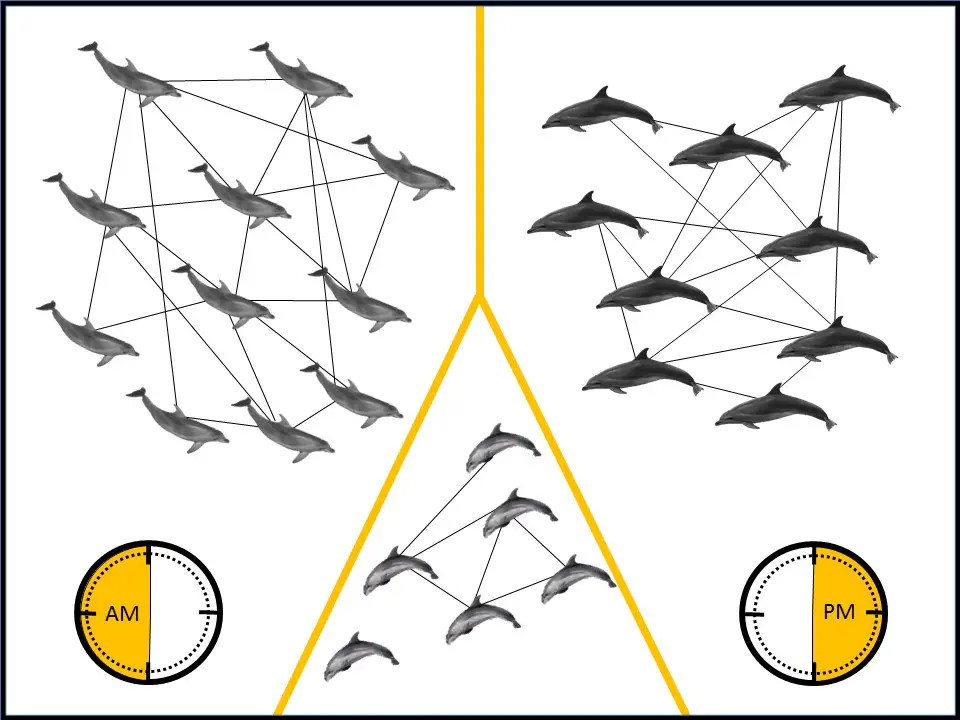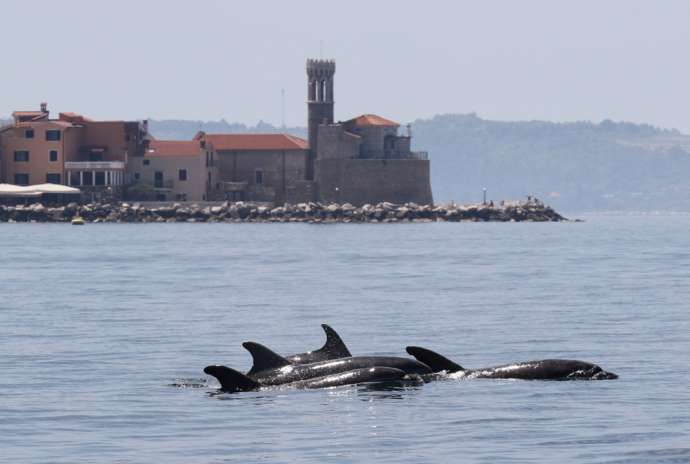A Slovenian team, working for the Piran-based organisation Morigenos, has discovered that the common bottlenose dolphins (Tursiops truncatus) living off the coast share the Bay of Trieste, dividing it based on time of day rather than territory, the first time such behaviour has been observed.
A paper published in the journal Marine Biology, “Behavioural and temporal partitioning of dolphin social groups in the northern Adriatic Sea”, and written by Tilen Genov, Tina Centrih, Polona Kotnjek, and Ana Hace, outlines how the researchers carried out their work, and what they learned. The team used the distinctive features on the dorsal fins of 38 dolphins to keep track of each individual, noting when and where the animals were sighted in the bay. An analysis of the data showed that the dolphins were divided into two groups of 19 and 13, with the remaining six making up a loose group of its own. The larger group of dolphins tended to following fishing trawlers between the hours of 07:00 and 3:00. In contrast, the smaller group of 13 were seen swimming with the trawlers, and hunted in the bay between 18:00 and 21:00. Dolphins from each group were rarely in the same area at the same time.

Source: Tilen Genov
In addition to revealing such temporal segregation for the first time in this species, the study is of interest because – as the paper concludes – “We demonstrate how different segments of the same population may behave very differently and have differing effects on human activities such as fishing (through potential depredation or gear damage). In turn, they may respond differently to anthropogenic pressures, as temporal partitioning may make animals either more or less vulnerable to disturbance from boat traffic.”
The full paper can be found here, while those interested in learning more about Morigenos can read an earlier story about the organisation here. The study reported in this story is also summarised in a short and relatively simple Slovene-English dual text here.






